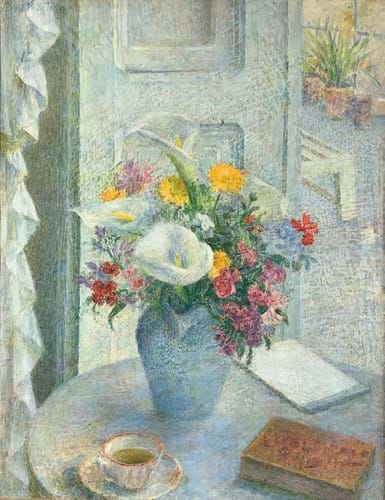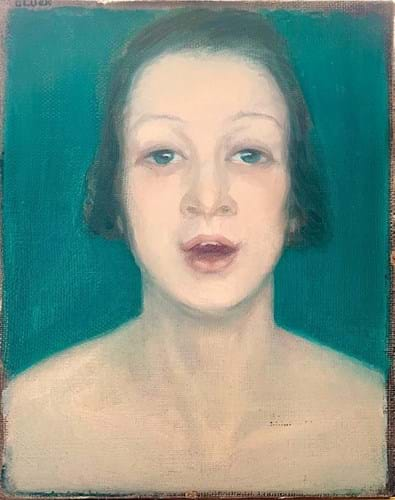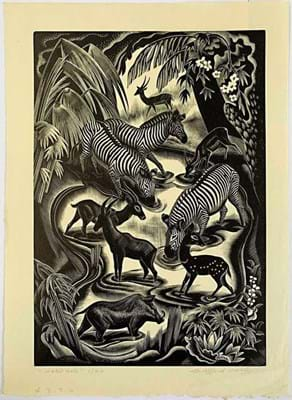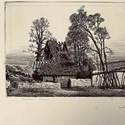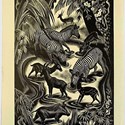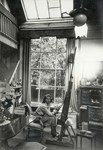Back in June at the Penzance saleroom, a portrait and still-life by Cornish favourite Dod Procter (1891-1972) sold for £26,500 and £18,000 respectively (see News, ATG No 2448). On offer at the September 17-18 sale was another still-life that was taken to an even higher sum.
The French Window, a 2ft 6in x 23in (75 x 59cm) signed oil on canvas, came to auction from a private local client who had a long connection with the art scene in Cornwall. The vendor had known Procter herself and had purchased the still-life directly from her not long before she died in 1972.
The picture of flowers on a table was painted in Tenerife while Procter was on holiday. The cup and saucer in the foreground was a familiar touch but the work was compositionally unusual, with the curtain to the left and the balcony in the background to the right. Along with a series of other factors including its tonal quality and market freshness, the £6000-8000 guide was not deemed excessive and it drew keen interest on the day.
After a strong competition, it was knocked down to a phone bidder at £27,000 – a result that stands within the top 10 auction prices for Procter and the third-highest for a still-life (Source: Artprice by Artmarket). It is also the highest so far at an auction outside London.
Flora focus
From the same source was a small portrait by Hannah Gluckstein (1895-1978), the artist more regularly referred to as ‘Gluck’.
Study for Flora, a 10 x 8in (26 x 21cm) signed oil on canvas from 1921, had been acquired by the vendor from the sale of the collection of architect and designer Sir Edward Maufe in 1977.
The work was a study for Flora’s Cloak, a larger and well-known painting that Gluck exhibited at a solo show at the Dorien Leigh Galleries in South Kensington in 1924. In that picture, the subject was depicted full length and with striking plumed yellow hair. It was Gluck’s only known nude.
Maufe and his wife Prudence, a designer and later a director of Heal’s, were close personal friends of the artist and it has been mooted that Prudence was the model for this study, although Maufe’s granddaughter, the writer Juliet Dunmur, apparently refuted this suggestion.
Flora’s Cloak appeared in Sotheby’s sale of works from the Fine Art Society in February 2019 and sold at £80,000, among the highest prices for Gluck. It subsequently entered the Tate Gallery’s collection after being purchased with funds provided by the Denise Coates Foundation on the occasion of the centenary of women gaining the right to vote in Britain.
Unlike the larger finished version, this study in Penzance was much more restrained. But being another interesting and market-fresh offering, it drew good demand against its £15,000-25,000 estimate and sold to an online bidder at £20,500, once again the highest price for the artist at an auction outside London.
The auction itself at David Lay was the firm’s first two-day art sale. The 860 lots raised a total of over £300,000 and the auction house noted that, during times of uncertainty, clients still seemed keen to invest in art.
With other pieces of Mod Brit art also performing well at the event, the auction underlined how important this sector has now become to salerooms’ totals.
Publisher’s prints
Among the most notable other consignments was the group of 71 lots from the collection of prints owned by Joe Graffy, a publisher who founded the Penn Print Room in 1970s producing works by revivalist print-makers. Almost all of them sold for a combined hammer total of £26,000.
The works here featured 47 etchings by Stanley Roy Badmin (1906-89), all of which sold, with many going well above estimate. The artist is best known for pictures of the British countryside and these were typically detailed examples of his printed output.
The strongest competition and top price came for a signed etching heightened with white chalk titled Deserted Barn, Chipstead 1930. Measuring 6 x 10in (15.3 x 25.3cm), two inscriptions on the print indicated that this was the first of three trails for the first state of this print – a factor that gave it high appeal to collectors.
Estimated at £250-350, it was knocked down to a specialist print buyer at £2200 – an auction record for an individual print by the artist.
A further 23 prints by Clifford Cyril Webb (1895-1972) were also part of the Graffy collection and again they met with a good response with all bar two finding buyers. Uppermost among them was a woodcut Water Hole, part of an edition of 20 prints depicting zebras, antelopes and a warthog and arguably the most striking image among the group. It was estimated at £150-250.
Measuring 9 x 6in (23 x 16cm), it was signed, titled & numbered in pencil and eventually sold at £650 – among the highest sums at auction for a print by the artist.


